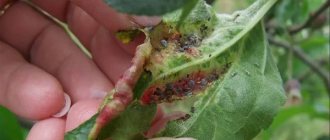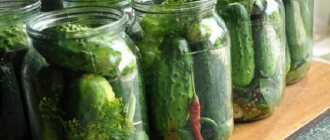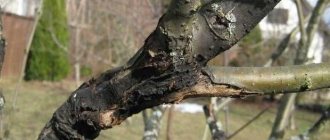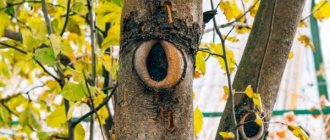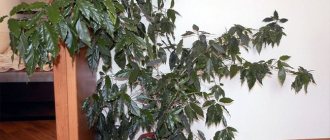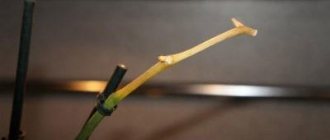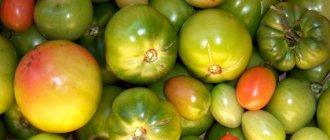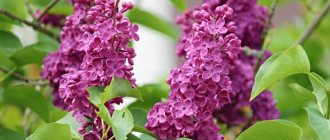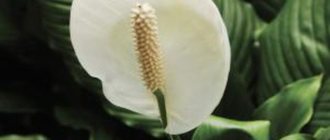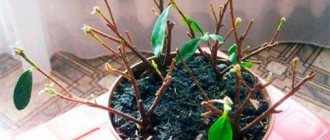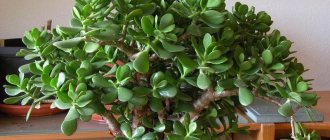Loading…
Loading…
Lichens that appear on the bark are a symbiotic association of algae and fungi that harm the tree. How to get rid of lichen on an apple tree is a problem that most gardeners face, since the presence of parasitic organisms on a fruit tree slows down its growth, reduces productivity and can even lead to drying out of the branches.
What is a lichen?
Before we can find out the methods of combating lichen, it would be useful to consider this new growth and what it is.
So, lichen can be called a tandem of fungus and algae, which have a beneficial effect on each other, sharing moisture and beneficial salts. As a rule, many people mistakenly believe that lichen has its own root system.
Actually this is not true. Moreover, the lichen does not suck moisture from the crop; the tree is necessary for this new growth only as a support.
Important! Lichens may differ in their external features. On apple trees, bushy, scale or scaly types are most often found. Therefore, the methods of struggle must be appropriate.
It is worth noting that today more than 25 varieties of lichen are known. They have an individual color, while all species need regular access to air and light, and the absence of these provokes the death of the lichen.
Description of the main types of lichens
Often such frightening growths are not lichen, but moss on an apple tree. Moreover, it manifests itself not only on old trees or in conditions of high humidity. But in order to more accurately understand what kind of lichen has settled on the apple tree, you first need to visually inspect it.
Xanthoria wall
Another name for this type of lichen is goldenwort. It received this name for the bright shade of its cover. The spot is most often orange or golden; where the shadow falls, the color is rather pale. This subspecies is leaf-shaped and slow-growing. In a year it can increase by a maximum of a millimeter.
Crustose lichens
This subspecies is most often called cortical, because most often they are attached to the bark. But sometimes they also appear on the ground. They look inconspicuous, grayish or brownish. Very often they are completely inconspicuous.
Fruticose lichens of all varieties
They most often appear in cracks in living bark or in areas of wounds or debris. The name completely describes the appearance. These are small growths, with small rounded or flattened shoots.
Leaf lichens
They look like curly leaves that grow in breadth rather than upward. When physically impacted, they are removed from the surface by plates. Their shade is yellow-green, mustard or marsh.
What harm can lichen cause?
If you find lichen on the trunk of an apple tree, you must immediately begin treating the garden. Why? The whole point is that the trunk of any crop is covered with so-called lentils, with the help of which the tree fully breathes.
And if a new growth in the form of a lichen begins to actively grow, naturally, the small chambers for obtaining oxygen are blocked, as a result, normal gas exchange stops, which can lead to the death of the apple tree in the future.
In addition to the above, quite often, entire colonies of parasites and pests settle under the lichen. Moreover, these growths on the tree provoke the appearance of various defects.
Important! Considering that various parasitic insects often settle under the lichen, try to remove it with special chemicals or use improvised means.
If the apple tree is many years old and its crown is very thick, then the lichen on such a crop will feel best. Therefore, it is very important to regularly thin out the branches.
This new growth produces acids that block the full growth of the apple tree. Therefore, it is very important not to allow the lichen to develop further.
In general, some experienced gardeners recommend regularly inspecting the crop for timely detection of lichen.
conclusions
- Moss is only a harmless new growth on the trunk at first glance; many bacteria and infections develop under its crust.
- Severe waterlogging, dense crown. Poor ventilation and improper care lead to the formation of lichen on the apple tree.
- It is impossible to get rid of moss with chemicals, so folk remedies are used together with pharmaceutical drugs.
- After cleaning any trees, including the Cathedral pear variety, plants growing nearby are disinfected with antifungal compounds.
Reasons for the appearance of the tumor
Before considering methods of combating lichens, it is important to know the reasons for the appearance of this new growth. As a rule, there are several provocateurs for the appearance of lichens, namely:
- improper tree care;
- ignoring regular treatments;
- incorrectly chosen place for planting, which is why this defect often transfers from diseased crops to healthy plants;
- lack of preventive measures;
- lack of proper treatment, as a result of which the defect quickly spreads and leads to the death of the tree.
It is worth noting that the above factors can be easily eliminated if you organize proper care for the fruit tree. But, there are a number of other conditions that provoke the appearance of lichen, but they do not depend on the correct actions of the gardener, namely:
- the main carrier of lichen spores is the wind;
- the summer season, during which neoplasm bacteria multiply at lightning speed;
- Excessive amounts of sunlight can cause deformation of the apple tree bark, causing cracks to appear in it.
Important! Correct and regular pruning of defective branches can eliminate the disease. And if you treat the culture with copper or iron sulfate, then not a trace of the lichen will remain.
In general, there are many reasons why the neoplasm in question appears. But the essence boils down to one thing: it is the weakened immunity of the crop that provokes lichen attacks.
Treatment
Prevention is best, not treatment. There is no exact date or duration of treatment. During each procedure for caring for an apple tree, it is necessary to pay attention to the condition of the trunk and branches of the plant, as well as the trunk circle.
The first and most important preventive measure is sanitary pruning of the crown. This will allow for proper circulation of air and moisture, thinning out the number of branches, leaving only those that bear the load.
Sanitary pruning of apple trees.
Also no less important is spring preventive spraying. For bare shoots, before the buds bloom, you need to treat them with iron sulfate or Bordeaux mixture. Although they primarily work as a preventative against powdery mildew or scab, they suppress the pathogenic microflora on which lichens settle.
General signs of a defect
How to promptly identify and eliminate the problem that has arisen? In this case, the following signs will help you, indicating that it is necessary to urgently select treatment methods:
- formation of cracks in the bark;
- change in the appearance and color of the bark;
- the appearance of hollows;
- detachment of bark fragments;
- the appearance of small neoplasms on the stem part;
- drying of branches.
Important! An apple tree needs proper pruning and crown formation. Well, in the case when the crop is completely affected by lichen, then, unfortunately, you will have to get rid of the tree by cutting it down.
And lastly, if the trunk of the tree is divided into parts or you find a fracture, this also signals a disease in the crop.
How to fight and what to treat?
When a fungus is detected on apple trees, first of all it is necessary to find out: what led to the infection, what mistakes were made? It is necessary to develop a strategy for restoring the health of the garden.
Young trees are less susceptible to the disease, but the fungus can kill them in one season.
There is good news - it’s easier to treat a young garden right away with strong chemicals, without regard to the “waiting period before harvesting.”
In addition to Bordeaux mixture, you can use all copper-containing preparations such as:
- “HOM”;
- “Skor”;
- "Topaz".
Advice! You can try to save older trees with ovaries with a solution of baking soda (150 grams per bucket of water). Do not be alarmed if the tree drops its fruit - this is how it saves its life. Having given a full harvest, the apple tree will not be able to survive the winter.
When pruning in autumn, these apple trees need to be rejuvenated as much as possible and the crown thinned out.
Don't forget to whiten the trunks.
Fighting methods
How to remove lichen on an apple tree? Today there are many different methods of combating lichen, such as:
- getting rid of the growth physically;
- use of chemicals;
- use of whitewash.
Important! If you find whitish or yellowish spots on a tree, do not rush to immediately take drastic measures. If the growth does not increase, you can leave it alone, but when you discover that it is spreading, you should take immediate action.
Each of the above methods is used in a specific case. Therefore, let's take a closer look at them.
How to deal with sooty fungus
Before starting treatment, it is necessary to determine the cause of the fungus and eliminate it. Heavily overgrown trees are trimmed and tidied up.
If the cause is insects, then they are treated with chemicals:
- "Decis";
- "Fufanon";
- "Karbofos";
- "Iskra D"
You can use more environmentally friendly methods:
- A fishing belt placed on the trunk will allow you to catch insects in large quantities.
- Bait traps with fermented compote are hung on trees, which attract pests.
- If the insect population is small, then spraying with infusion of tobacco, garlic, and wormwood helps. Coniferous concentrate and decoction of potato and tomato tops are effective. The listed plants retain their toxicity for a short time and do not cause harm to the environment.
- Planted herbs around the trees help repel pests that like to live on apple trees.
Severely affected branches are cut off and burned. For prevention, after pruning, it is recommended to clean the trunk and wash it with a solution of copper sulfate. If there are less than two weeks left before harvest, treat with soda solution. Add 150 grams of soda to a bucket of water. After harvesting the fruit, re-processing is carried out.
If affected by a fungal disease in the fall, be sure to prune the affected branches within reason. Fallen leaves are collected and burned. Before the winter cold, the trunks are whitened.
It is also effective to combat the formation of sooty fungus due to pests using biological preparations:
- "Lepidocide";
- "Bitoxibacillin";
- "Fitoverm";
- "Entobacterin".
These preparations can be used to treat the crop 5 days before harvesting the fruit. “Fitoverm” is the most gentle drug that contains normal microflora and suppresses the development of fungus.
Getting rid of growths using a physical method
You can peel the apple tree yourself. With this method of struggle, you will need the following available means:
- wooden scraper;
- film;
- ready solution of iron sulfate.
Having prepared all the means, they begin to clean the wood. To do this, perform actions in a certain order, namely:
- with the onset of spring they go to the garden to destroy the growth;
- first, film or burlap is spread under the crop;
- Next, they begin to scrape off the wet growth until the gardener sees a healthy layer of wood.
After this, all cleaned areas can be treated using iron sulfate 300, but if you don’t have it on hand, clay will also work.
It is worth noting that if the tree bark has been heavily peeled and the wood has been damaged, take crushed activated carbon and cover all areas of damage.
Other apple tree diseases and how to get rid of them
If a tree is infected with fungus, treatment must be started immediately, otherwise it will quickly die. After all, because of one patient, an entire garden can suffer. Gardeners know how many diseases exist that affect fruit trees, so they carry out preventive measures every year. But what to do if you still couldn’t save the garden? As a rule, gardeners suffer from the same problems from year to year. Main diseases:
- scab;
- rust;
- powdery mildew.
Each disease has its own method of fight.
Apple scab
Scab is somewhat different from the previous disease. When infected, fruits, leaves and flowers become covered with gray-brown spots. This is considered a dangerous disease of fruit trees. Scab can overwinter in fallen leaves and release spores in the spring when the weather is wet.
Important! Mass infection occurs in the first half of summer after heavy rains.
First, oily spots appear on the leaves, after which they turn into a brown coating. Infected leaves wither and fall off. As a result, the fruits become wrinkled and not plump. The apple may even be deformed on one side.
Apple scab
You can get rid of scab as follows:
- In the spring, even before the first leaves appear, you need to spray the soil and fruit trees with chemicals. Copper sulfate, nitrafen (300 g solution per 10 liters of water), DNOC (1% solution) are excellent for these purposes.
- At the end of April, the garden should be treated with Bordeaux mixture, cuproxate or copper oxychloride.
- During the formation of buds and after, use Bordeaux mixture 1% solution.
- 3 weeks after the tree blooms, the apple tree is sprayed with phthalan, captan, and zineb.
Note! As a preventive measure, you need to immediately get rid of fallen leaves and plow the ground.
Rust
If the leaves of the apple tree are covered with large brown spots, the bark on the tree is cracking as if after burns, the apples are wrinkled and covered with sores, then this indicates that it has been affected by rust. This is a fungal disease that affects the entire apple tree: from the roots to the crown. If no measures are taken, then over time the affected branches will dry out, and then the entire tree. Therefore, you cannot delay treatment. Start in early spring:
- You should start by trimming the affected branches, which are removed 10 cm from the healthy part.
- The sections should be disinfected with copper sulfate (5%), and then covered with garden pitch.
- Next, treat the wood with Bordeaux mixture (1%). 3 sprays per season will be enough.
Important! If juniper grows in the garden next to apple trees, then it needs to be planted at a greater distance, since it is the causative agent of rust.
Powdery mildew
Another common disease of fruit trees is powdery mildew. It is caused by a fungus that overwinters in the buds of affected shoots. A characteristic sign of the disease is a dense silvery coating on the shoots. If treatment is not started in time, this will lead to drying of the inflorescences and leaves, and shedding of the ovaries.
The main ways to get rid of powdery mildew:
- Throughout the growing season, you need to cut off the affected shoots.
- After the end of the flowering period, the apple tree is sprayed with the preparation hom.
- After harvesting, trees must be treated with copper or iron sulfate. As an alternative, a 1% solution of Bordeaux mixture is suitable.
- After processing, all fallen leaves are collected and burned.
Use of chemicals
It would probably be redundant to describe all the means developed specifically to combat lichen, so we will describe only the most effective ones. These include the following:
- inkstone;
- the drug Skor to destroy this type of fungus, which has the same effect as vitriol;
- lime milk.
Important! If you are unable to completely rid the tree of lichen, then use the drug Skor, which is diluted strictly according to the instructions and sprayed in the spring in the phase of dormant buds.
It is advisable to use all of the above remedies in the spring. As a rule, after the first treatment, the growth disappears literally within a week.
If the defect has not completely disappeared, it is recommended to re-process. And don’t forget, if you let the crown thicken too much, there won’t be a good harvest in the future. And the culture itself will become weaker.
When is it better to clean or treat trees from moss and lichen?
It is convenient to clean trees from mosses and lichens when there are no leaves , i.e.:
- in early spring, when the trees are still bare, their buds have not yet swelled, or they are in the “green cone” stage (usually in March-early April).
- and/or in late autumn, when the last harvest is harvested (in October), and this can be done both before and after leaf fall.
Interesting! Treatment of trees from mosses and lichens is usually combined with early spring eradication treatment of the garden and/or autumn spraying against diseases and pests .
Using whitewash
Whitewashing is perhaps one of the most versatile and affordable means of treating lichen on an apple tree. It is advisable to whiten trees in the fall, because it is during this period that the growth develops most actively. Well, with the onset of spring, repeat this procedure.
In such conditions, all the growths will not be able to survive on the tree for long. To make the slaked lime solution last as long as possible, add a little milk to it. Getting rid of lichen in this way always brings good results.
If the growth has formed along the bark in small groups, it can be excised along with the bark. Only in this case, after this procedure, you will need to carefully cover all cut areas with clay. After such manipulation, the layer will gradually be completely restored.
Separately, it is worth highlighting expert advice on how to deal with this neoplasm. As a rule, if your fruit front garden is in a state of neglect, then first you will need to cut down and cut out those branches that create excessive thickening. And only then apply all the above treatment methods.
Classification
Not all of them are harmful to the plant.
There are some mushrooms growing on the apple tree that are in symbiosis with it:
Parasitic
Surely every person has seen fungi on trees, stumps or ordinary dead wood that look like a sponge or resemble a sea shell.
Sponge mushrooms on an apple tree.
Carefully! These are tinder fungi - parasites for our garden and, of course, fruit plants.
There is an opinion that tinder fungi destroy plantings, but this is not entirely the correct conclusion. The bulk of them settle on rotting, old or already dead plants.
But there are those who are not averse to settling on very young trees.
Some of them can remain under the bark for several years and eat the pith and other parts without being detected.
The nature of the lesion depends on the type of parasite. Some of its varieties are quite often found in gardens and homesteads:
- False - produces white core destruction;
- Plum-red - core and branches;
- Flat-yellowish-white destruction, causing the plant to dry out and become brittle;
- Real tinder fungus - at the site of rot, usually white or light yellow in color, the core of the wood becomes brittle, stratifies into annual rings;
- Grayish-yellow - rot at the core is brown in color and spreads very quickly through the wood;
- Scaly - forms white rot on the core.
Tinder fungus.
The fungus located on the surface of the wood is not dangerous.
The main danger is in the mycelia, which penetrate deep into the tissues and pose a great danger.
They seem to corrode the wood, forming rot and a hollow, which disrupts the natural physiological process of development. The apple tree weakens and then dies.
Some varieties can destroy a tree in a very short time, while others can suck the juices out of it for decades.
Polypores and the fight against them
You can almost always save a fruit tree if you correctly determine the type and characteristics of the tinder fungus.
Be careful not to underestimate the consequences it can cause.
The main thing is not to immediately rush into panic and destroy culture.
Usually, up to five years pass from the appearance of the first fungal attacks to a noticeable decrease in yield, so there is time to save the planting from death.
As a last resort, leave such a tree as it is and fight the disease, at the same time plant a new one so that it grows and begins to produce a harvest, becoming, as it were, a replacement for the sick one.
If, after annual prevention, the fungus appears again on the trunk of the apple tree, then it is necessary to cut them off and burn them.
Advice! Fungal spores are released from the beginning of August, so the removal procedure must be completed before this month.
If there is such a mushroom on an apple tree, what should you do?
Treat the cut areas with copper sulfate and garden pitch.
Coat the stamps with clay with casein glue and the addition of karbofos. This will prevent their further occurrence.
Symbiosis with apple tree
There is a friendship between fungal organisms and plants or the so-called symbiosis (mycorrhiza).
This connection between them is very important for both of them.
Entoloma garden apparently enters into symbiosis, since it can often be found under it.
But the relationship has not been fully studied, so it is difficult to say affirmatively about symbiosis in general.
The best means of prevention
Nothing protects a crop better than regular care and treatment. Moreover, if you carry out all the manipulations correctly, you will not encounter such a problem as the appearance of growths and treatment of lichen on an apple tree. So, what you need to do to prevent fungal defects:
- Treat your garden regularly to remove parasites and defects.
- Lubricate all areas where the bark is cracked with clay mash or garden varnish.
- With the onset of spring, even before the buds open, spray the trees with a solution of iron sulfate 10.
- Every year, take the time to trim the garden, whitewash, and properly form the crown.
- Apply fertilizer and loosen the soil.
- Do not forget that whitewashing an apple tree is the best option in preventing the appearance of lichen and other trunk diseases.
- When working in the front garden, use only clean tools that have been pre-treated with alcohol. In this case, fungi will not be able to spread throughout the tree.
Well, so we looked at how to get rid of lichen on an apple tree. It is worth noting that the most correct thing would be to regularly carry out the simplest preventive measures that will help preserve your garden and delight you with a large and generous harvest.
And it’s also worth remembering what experienced gardeners say about fruit trees; in this case, there is only one piece of advice: pay more attention to the garden, and you will get an excellent return in the form of sweet apples.
Signs of lichen on an apple tree
It’s easy to recognize the problem: a greenish coating appears on the bark, which is produced by unicellular algae. Afterwards, a fungus appears on the surface, which provokes splitting of the bark. The organisms themselves are predominantly yellow-brown in color. If the humidity is high and there is no lighting, the infection multiplies rapidly and lives for several years.
It is easier to detect growths in damp weather - with increased humidity they become brighter (green, bright yellow, brown or light green). Some gardeners believe that lichen appears exclusively on old trees and do not think about how to get rid of the problem. But in fact, the disease can also appear on young apple trees.
Did you know? Some lichens can live for hundreds of years. Moreover, even the most unfavorable conditions are not capable of destroying the body. It just falls asleep and stops developing. But after awakening, it begins to actively grow.
Factors that provoke the appearance of organisms can be different:
- thickened crown or planting;
- increased soil acidity;
- small cracks in the shell of the trunk, from which juice is constantly released, thereby creating a favorable environment for the proliferation of microorganisms - humidity;
- excessive watering;
- close location of groundwater;
- weakened and exhausted root system of the apple tree;
- freezing or sunburn of the bark.
Several forms of lichen can develop on one plant at once.
The trunk covered with microorganisms suffers from oxygen deficiency, and pests, viruses or infections appear in the affected areas. Therefore, at the first symptoms, you should immediately take measures to save the apple tree.
How to rid a young tree of lichen
Young apple trees must be handled carefully - there is a risk of causing burns to the delicate wood. Clean carefully, using a medium-hard scraper, trying not to damage the bark. When spraying with preparations, make sure that the solution does not get on healthy tissue.
See also
Description and characteristics, advantages and disadvantages of Orlik apple trees, growing featuresRead

